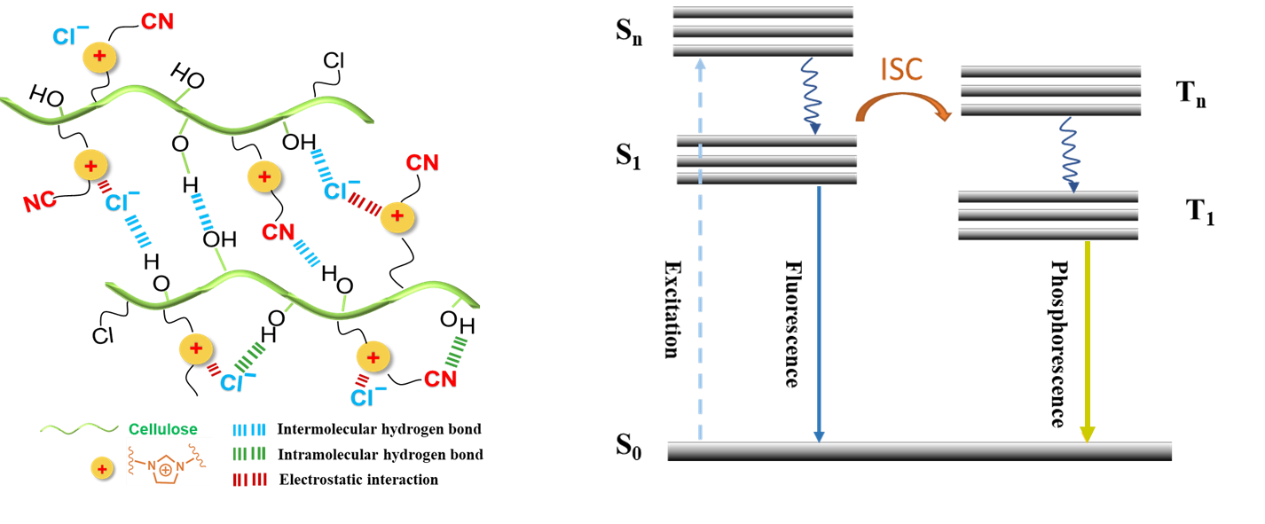Herein, we present a phosphorescent cationized cellulose derivative by simply introducing ionic structures, including cyanomethylimidazolium cations and chloride anions, into cellulose chains. The imidazolium cations with the cyano group and nitrogen element promote intersystem crossing. The cyano-containing cations, chloride anions and hydroxyl groups of cellulose form multiple hydrogen bonding interactions and electrostatic attraction interactions, effectively inhibiting the non-radiative transitions. The resultant cellulose-based RTP material is easily processed into phosphorescent films, fibers, coatings and patterns by using eco-friendly aqueous solution processing strategies. Furthermore, after we construct a cross-linking structure by adding a small amount of glutaraldehyde as the cross-linking agent, the as-fabricated phosphorescent patterns exhibit excellent antibacterial properties and water resistance. Therefore, considering the outstanding biodegradability and sustainability of cellulose materials, cellulose-based easy-to-process RTP materials can act as antibacterial, water-resistant, and eco-friendly phosphorescent patterns, coatings and bulk materials, which have enormous potential in advanced anti-counterfeiting, information encryption, disposable smart labels, etc.
This research work entitled “Ultralong phosphorescence cellulose with excellent anti-bacterial, water-resistant and ease-to-process performance” has been published in nature communications.
Link to the article: https://doi.org/10.1038/s41467-022-28759-x
Co-corresponding authors: Professor Jiaming Zhang (zhjm@iccas.ac.cn), and Professor Jun Zhang (jzhang@iccas.ac.cn)



downloadFile